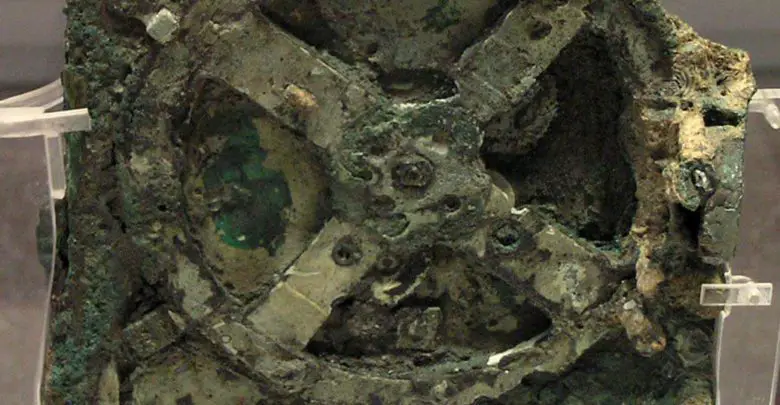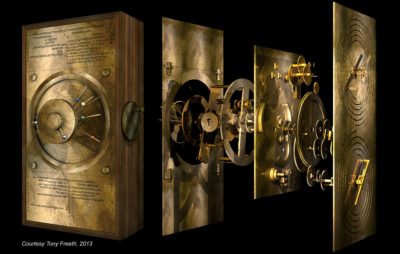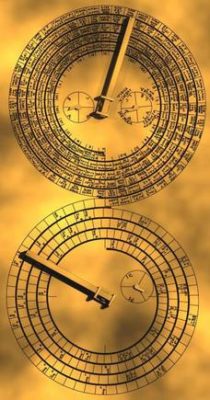Antikythera Mechanism – An Ancient Greek Computer

Antikythera mechanism An Ancient Greek Computer, the artifact which was recovered on May 17, 1901, from the Antikythera shipwreck from the Greek island called Antikythera, which in antiquity was known as Aigila. It is believed that this incredible invention was drowned in the sea and was a secret for 2000 years. It is a fabulous engineering mechanism, way ahead of time that was created in Greece. All known fragments of the Antikythera mechanism are kept at the National Archaeological Museum in Athens, along with some artistic reconstructions of how the device may have looked.
Among the sublime objects such as sculptures, oil lamps, utensils, divers found a machine which was later encrypted by scientists that this is a machine to gather astronomical data. Mechanism arouses the curiosity of many researchers. After many types of research and studies, scientists say that it was also used to predict the future. Researchers say that it was not just a prototype it actually exists. So, possibly there could exist the other type of such devices and mechanisms which are yet to be discovered.
The Antikythera Inside Mechanism
The Antikythera mechanism estimated to be at least 2000 years old. It was found to be composed of interlock systems and gears. It is believed that it was used to track the planetary positions and the position of sun and moon in the universe. The machine was capable of calculating the astronomical events. That was similar in size of a mantel clock, and bits of wood found on the edges indicate that it was housed in a wooden case.
Similar to a clock, the case would’ve had a broad circular face with rotating hands. High-resolution photographs of the interior of the machine were taken, and a reliable reconstruction has been made. Meteorological and text analysis was done. It was encrypted that there was a large front dial which shows the 365 days of the year and there is an inner circle that has the 12 signs of the zodiac. For each day we can find the exact position of the sun and the moon. At the back of the dial, two more spiral dials show lunar and solar cycles and eclipses over the period of 19 years.

By Researchers
“Nothing like this instrument is preserved elsewhere. Nothing comparable to it is known from any ancient scientific text or literary allusion, it is a bit frightening, to know that just before the fall of their great huge the ancient Greeks had come so close to our age, not only in their thought but also in their scientific technology.”, Prince from researchers team wrote in 1959.
“It’s a lot of detail for us because it comes from the period of which we know very little about Greek astronomy and essentially nothing about technology, except what we gather from here. So these minimal texts are tremendous things for us”, said by Alexander Jones a famous historian and a member of a research team.

Regardless, the Antikythera mechanism proves that the ancient Greeks used complex arrangements of precisely cut wheels to represent and predict scientific and astronomical occurrences. It’s also a window into how the Greeks saw their universe. They came to believe that nature worked according to predefined rules, like a machine. Modeling was an approach that formed the basis of our modern scientific views. The ancient mechanics that captured the cosmos in bronze weren’t just modeling astronomical theories but were also a great model of inspiration.
There are a lot more questions about this mechanism. From where did the Greeks get such technology and perception to capture the whole cosmos? What was the idea and reason behind the construction of this computer? Are there more such devices, who have made this and why?? The research continues, constantly uncovering further mechanical and mathematical mechanisms hidden inside them !!



